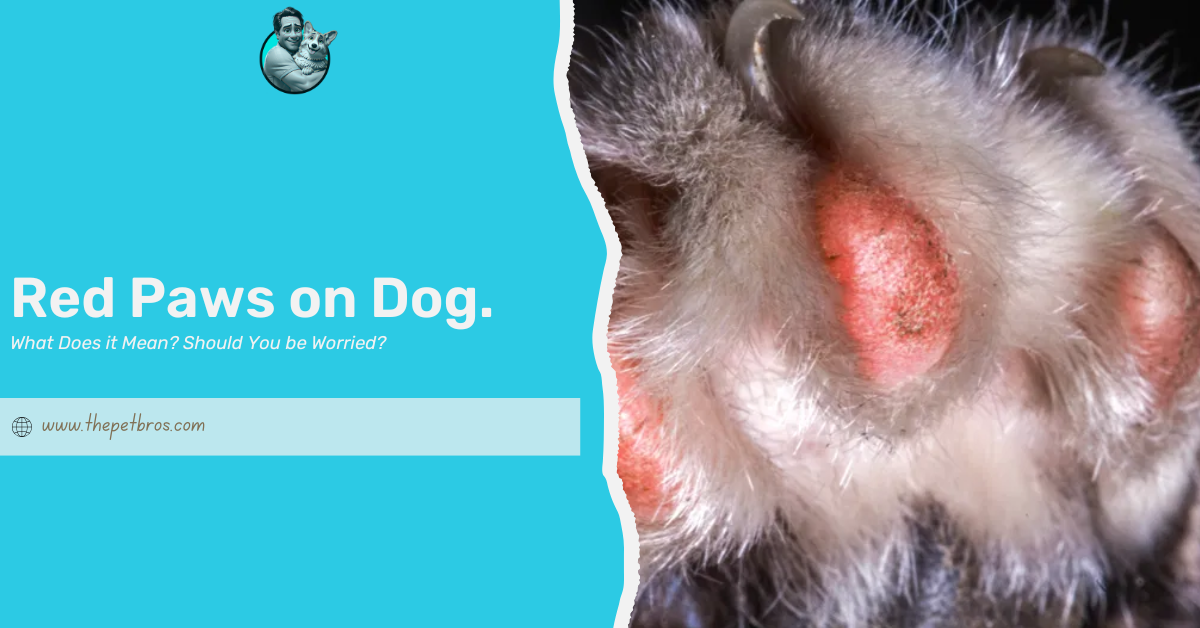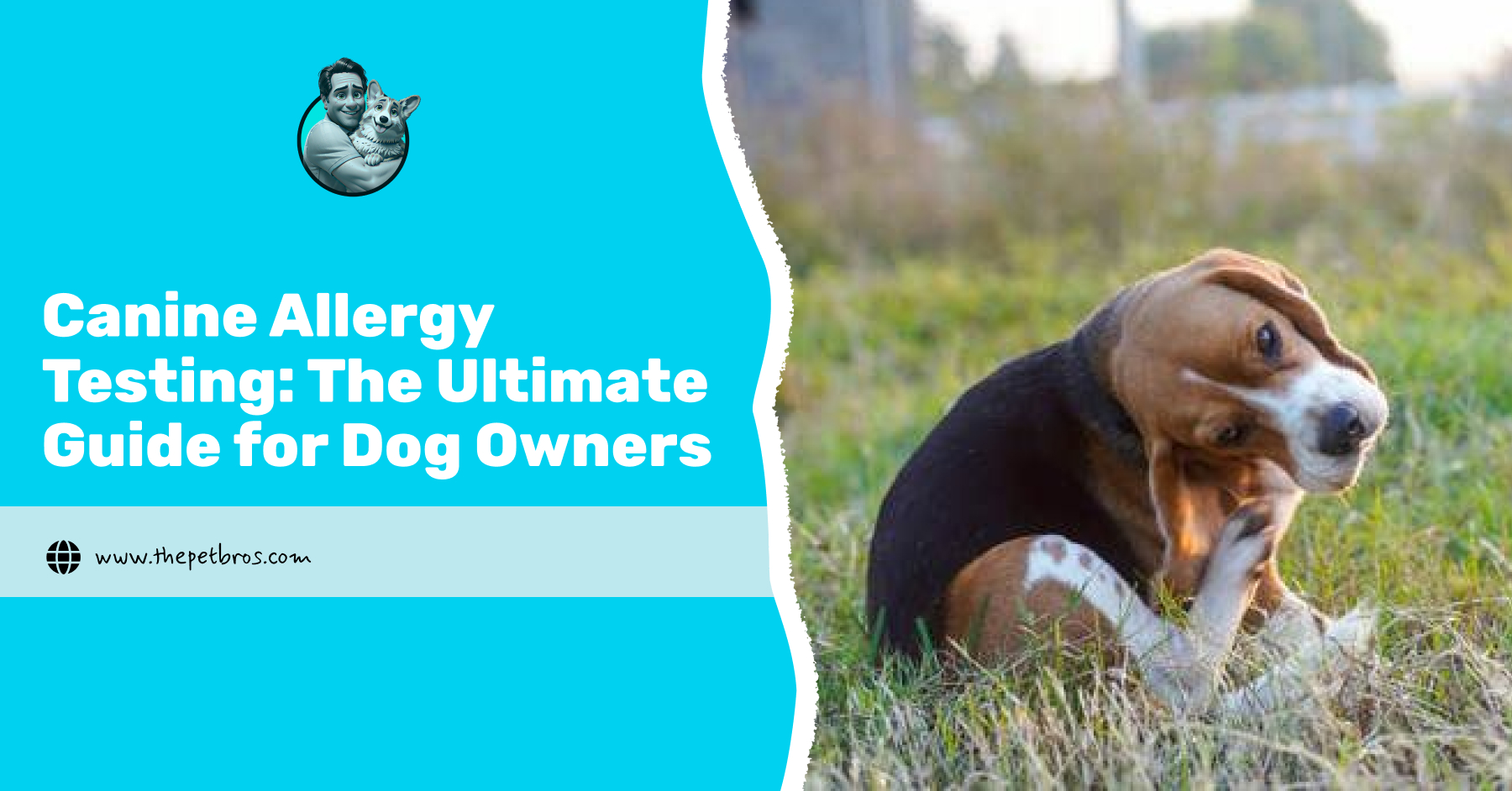Your dog’s paw becoming red should be concerning. While some cases resolve on their own, others may indicate an underlying health issue that requires your attention. Some cases of red paw dog, like injuries, can be monitored and dealt with quickly, but some, like parasites and infections, may be critical.
This article will walk you through the common causes of red paws in dogs, how to recognise them, and what you can do to prevent them.
So, What Exactly Does Red Paws in Dogs Mean?
Red paws in dogs occur when the colour of your dog’s paw pads changes to a reddish hue. And sometimes, they can also be accompanied by swelling, itching, or visible signs of irritation.
If you notice your dog licking or chewing its paws more than usual or acting uncomfortable, you must prepare for a vet visit. However, not all cases require vet visits because they can be easily treated if discovered early.
That reminds us that you must regularly check your dog’s paws to spot any changes early. If someone else primarily cares for your dog, pay attention to behaviours like excessive licking or visible discomfort because these are often the first signs that something might be wrong.
Common Causes of Red Paws in Dogs
So, what causes red paws in dogs? Your dog can have red paws for many reasons, and you need to understand them to better deal with them.
1. Allergies
Allergies are one of the most common causes of red paws in dogs. Urgent Vet classifies allergies into two main types: environmental and food.
Now, regarding environmental allergies, when you see your dog constantly scratching or licking, it might be reacting to environmental factors like dust, mould, pollen, or grass. Environmental allergies are often the main culprits behind itching, leading to excessive licking and redness. Some dogs even resort to biting their nails, further irritating their paws and making the problem worse.
As for food allergies, your dog might also develop them if they’re sensitive to certain ingredients. Some common allergens include corn, wheat, and soy. If you notice your dog licking their paws more after eating, food allergies could be at play. Monitoring what your dog eats and ensuring they get the right balance of nutrients, including safe, dog-friendly fruits and vegetables, can help minimise reactions.
2. Parasites
Parasites are a common cause of red paws, and they can come in the form of fleas, mites, and ticks. The way these parasites operate is different from one another. Fleas lead to itching and scratching, which can inflame the paws, while mites are tiny creatures that burrow into the skin, causing even more severe irritation. But the issue that comes with mites is they’re often hard to spot without a vet’s help. Lastly, ticks can attach to the paws, leading to localised irritation, often causing redness and potential infection.
If your dog seems restless and constantly paws at their feet, it could be a sign that parasites are involved. Check your dog’s paws regularly and consult a vet if you suspect pest activity.
3. Infections
Infections, both bacterial and fungal, can lead to red paws in dogs. If your dog has a cut or abrasion on their paw, bacteria can get in, leading to swelling, redness, and even a foul smell.
Fungal infections, on the other hand, tend to occur when paws stay wet for too long, and dogs that love water or live in humid climates are more prone to these infections. If your dog’s paws have an unpleasant odour or seem excessively swollen, it could be a sign of infection. These infections often worsen if left untreated, so getting your dog checked out by a vet if you notice these symptoms is important.
4. Injuries
Dogs can get injured without you realising it; that is why you must take note of injuries, no matter how small. Cuts from sharp objects, burns from hot pavement, abrasions from rough terrain, and injuries are common causes of red or even swollen paws. In some cases, swelling may be localised to a single toe, making it easy to miss at first.
The best thing to do for your dogs is to check their paws regularly, as that can help you catch injuries early before they cause more serious problems.
5. Underlying Health Conditions
Sometimes, red paws are a symptom of an underlying health condition. For example, autoimmune disorders or hormonal imbalances can cause inflammation in your dog’s paws. Some certain breeds are more prone to paw-related issues, so it’s important to keep an eye on your dog’s health if predisposed to these conditions.
Don’t hesitate to talk to your vet if you suspect an underlying health issue. Early detection can make a huge difference in your dog’s overall well-being.
Having discussed all these causes of red paws, it is also important to note that not every red paw is critical, which brings us to when you should be worried about your dog’s paws.
When Should You Be Worried?
Not all cases of red paws require immediate veterinary attention, but you should consult a vet if:
- The redness persists for more than a few days.
- Your dog excessively licks or chews their paws.
- There is noticeable swelling, bleeding, or an unpleasant odour.
- Your dog is limping or showing signs of pain.
- You notice signs of an infection, such as pus, oozing, or scabbing.
- Remember that persistent discomfort can sometimes show up in other ways too; some dogs struggle to settle at night, panting excessively or howling more than usual at night. All these indicate that something isn’t right.
How to Prevent Red Paws in Dogs
To keep your dog’s paws healthy and prevent redness, follow these preventive measures:
- Regular Paw Inspections: Prevention is key! Take the time to inspect your dog’s paws regularly; it’s a small step that could make a big difference in their health.
- Use Gentle Grooming Products: Opt for hypoallergenic, pet-safe shampoos and paw balms to avoid irritation, especially if your dog has sensitive skin.
- Maintain Proper Hygiene: Keep your dog’s paws clean and dry, especially after walks in muddy or wet environments. Trim the fur around the paws to prevent moisture buildup.
- Create a Safe Environment: Ensure that your dog’s living spaces are free from sharp objects and harsh weather conditions that could lead to injuries.
- Monitor Their Diet: Diet plays a big role in overall health. Ensure your dog eats a balanced, nutritious diet that doesn’t trigger allergies.
Conclusion
Red paws in dogs can be caused by various factors, from allergies and parasites to infections and injuries. While some cases are minor and resolved independently, others may require veterinary care. Regularly checking your dog’s paws and taking preventive measures can help ensure their health and comfort. If your dog’s red paws persist or worsen, don’t hesitate to seek veterinary advice.
You can keep your furry companion happy and healthy by staying informed and proactive!
Frequently Asked Questions
How can I tell if my dog’s red paws are due to an allergy?
Look for additional symptoms like itching, ear infections, or digestive issues. If allergies are suspected, your vet can recommend tests or dietary adjustments.
Should I worry if my dog constantly licks their paws?
Excessive licking is often a sign of discomfort. If it persists, it’s best to have your dog evaluated by a vet to determine the underlying cause.














